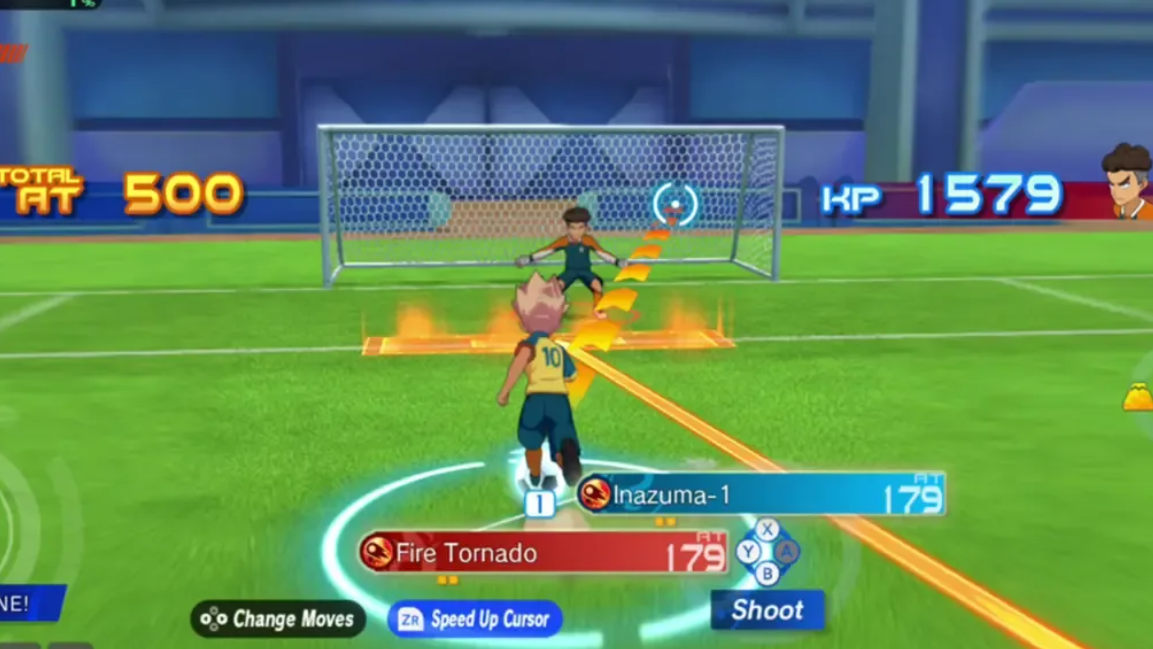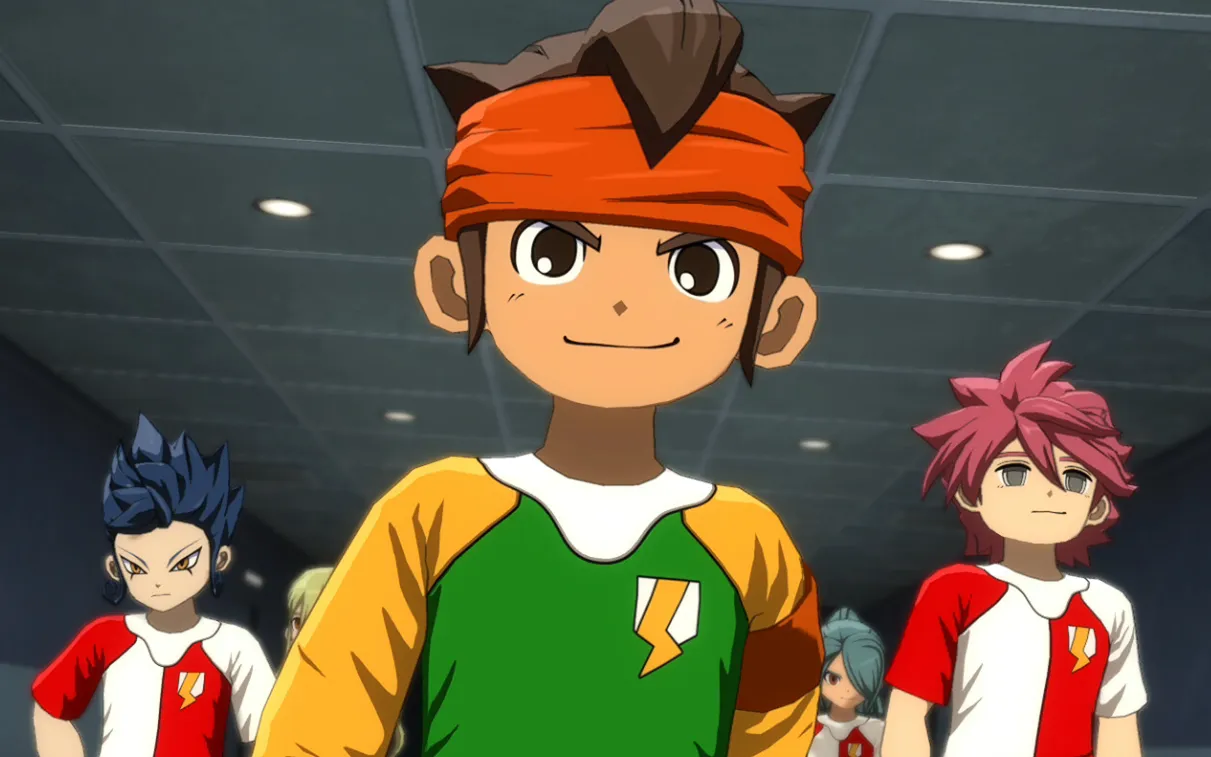Hissatsu techniques are the heart of Inazuma Eleven: Victory Road. They decide goals, blocks, and impossible saves, and they are also where the game’s systems get the most complicated. Victory Road pulls in hundreds of classic moves from across the series and layers a new resource system and a small set of brand‑new techniques on top.
How hissatsu work in Victory Road’s match system
Victory Road runs all special moves off a shared resource called the Tension Gauge (often shortened to TP). Every hissatsu — whether it is a shot like Fire Tornado or a keeper move like God Hand — spends TP when you trigger it.
You build tension by playing actively:
- Winning scrambles and Focus Battles
- Completing passes and productive attacking moves
- Solid defensive actions, such as clean tackles or blocks
Because the entire team effectively pulls from the same tension economy, you are constantly choosing between using a big chunk of TP on a striker’s shot or saving enough for the goalkeeper to survive the next barrage. Overcommitting on offense can leave your keeper with nothing in the tank when a powered‑up shot comes in.
Hype gauge and “Hype Animations”
Each player also carries an individual Special Move Gauge, often described as a Hype Gauge. This is separate from team TP and increases as that player contributes: successful dribbles, passes, tackles, and saves all feed their personal gauge.
When a player launches a hissatsu, the current level of their Hype Gauge changes two things:
- Power and success rate: A higher gauge makes the technique significantly stronger and more likely to win its clash.
- Animation level: A completely full gauge can trigger a “Hype Animation,” a more dramatic version of the move that represents its strongest form.
The result is that the game rewards building a specific player up in a phase of play, then cashing out that built‑up hype on a crucial shot, block, or save.
Elements and type matchups for hissatsu
Victory Road keeps the classic four‑element system that has defined Inazuma Eleven for years:
- Fire beats Forest
- Forest beats Wind
- Wind beats Mountain
- Mountain beats Fire
Every hissatsu carries an element and a type (shoot, dribble, block, or catch). Elemental advantage matters most in Focus Battles — those slowed‑down one‑on‑one clashes where the game compares techniques directly.
A few examples show how this plays out:
- Answer Boost is a Forest shoot move designed to hit hardest into Wind opponents, especially if the user has high TP and a full Hype Gauge.
- God Hand remains a Mountain catch hissatsu with a high TP cost and a critical reliance on Hype to shut down strong shots, especially from Wind attackers.
Because both element and Hype matter, the strongest play is often to engineer matchups where your element is favored, and your Hype bar is near full, rather than simply spamming a move as soon as it is available.
Scale: how many hissatsu Victory Road actually has
Victory Road leans hard into nostalgia. Chronicle mode pulls together more than 5,400 characters from the entire series, spanning the DS era, the GO trilogy, Ares, and Orion. To support that roster, the game carries over a huge library of classic hissatsu moves.
In total, there are more than 550 hissatsu techniques in the game. The overwhelming majority are returning moves; the goal is to let legacy characters feel like themselves again rather than to flood the game with brand‑new animations. On top of that, Victory Road introduces 21 completely new hissatsu that debut here and sit in their own category of “Victory Road hissatsu.”
All new Victory Road hissatsu (21 techniques)
The fresh techniques skew heavily toward shoot and catch moves, but every role gets something new. The table below lists each new hissatsu, its element, and its role on the pitch.
| Hissatsu | Element | Type |
|---|---|---|
| Answer Boost | Forest | Shoot |
| Bahamut Crash | Forest | Shoot |
| Cheat Blaster | Fire | Shoot |
| Dancing Turtle | Wind | Block |
| Empress Shadow | Fire | Shoot |
| Falcon Counter | Fire | Dribble |
| Force Flash | Mountain | Catch |
| God Fingers | Wind | Catch |
| God Hand Tiger | Mountain | Catch |
| Gravity Desert | Mountain | Catch |
| Icy Grace | Wind | Catch |
| Invisible Link | None | Shoot |
| Onigiri Over There | Forest | Dribble |
| Outer World | Forest | Catch |
| Penguin The Parade | Forest | Shoot |
| Sky Thunder | Wind | Shoot |
| Spring Thunderclap | Wind | Shoot |
| Sunshine Blade | Fire | Shoot |
| Swirly Shot | Wind | Shoot |
| The Fort | Fire | Block |
| The Matrix | Forest | Block |
Victory Road hissatsu category and debut moves
Within the wider hissatsu library, Victory Road tracks which techniques first appear in this game. These debut moves form their own category of “Victory Road hissatsu.” That category currently includes 50 techniques, mixing the 21 new moves listed above with others that arrive alongside the new story and its original characters.
The category is broad: it covers new shots like Sunshine Blade, keeper techniques like God Fingers and Gravity Desert, footwork moves such as Ayakashi Dribble and Yamabiko Step, and team or situational tools like Murakumo Trap or Empire Shield. The idea is straightforward: if a technique’s first appearance in the franchise is in Inazuma Eleven Eiyuutachi no Victory Road, it lives in this group.
Victory Road hissatsu list (by name)
The Victory Road hissatsu category contains 50 named techniques. The table below lists all of them for quick reference.
| Hissatsu name |
|---|
| Aim Shot |
| Answer Boost |
| Asoko ni Onigiri |
| Ayakashi Dribble |
| Bahamut Crash |
| Blackmail |
| Cheat Blaster |
| Dancing Turtle |
| Dark Mist |
| Deep Diver |
| Despair Fortress |
| Dokkan Train |
| Elegant Blade |
| Empire Shield |
| Empress Shadow |
| Endeavor Run |
| Flying Marlin |
| General Flag |
| God Fingers |
| God Hand Tiger |
| Gou no Issen |
| Gravity Desert |
| Guruguru Shoot |
| Hayabusa Gaeshi |
| Hitotsu |
| Hyouketsu no Mai |
| Kaijin The Quake |
| Matrix Eye |
| Megami Tairiku |
| Meikyou Shisui |
| Metal Hammer |
| Meteodd Fire Tornado |
| Meteodd Fire Tornado V |
| Murakumo Trap |
| Niagara Falls |
| Oraora Shikofumi |
| Outer World |
| Overglow |
| Penguin The Parade |
| Rock 'n' Roll Beat |
| Second Life Hoop |
| Shunrai |
| Silver Wolf Legend |
| Sunrise Carnival |
| Sunshine Blade |
| Sweat Stillness |
| Tenkuu Thunder |
| The Fort |
| The Matrix |
| Yamabiko Step |
How Victory Road reuses classic hissatsu
Victory Road does not try to reinvent every move. A huge part of its identity comes from lifting existing hissatsu from earlier games and fitting them into the new match engine. That means Fire Tornado still spirals into the goal, God Hand still reaches out with a giant spectral hand, and techniques like The Wall, Illusion Ball, or The Mist remain core tools.
Because the game uses a unified Tension and Hype system for all of them, these returning moves often behave a little differently in practice. Low‑cost techniques can be spammed more often to win minor duels, while signature moves with heavy TP costs and strong Hype scaling become true finishers you plan an entire attack around.

Playing around the hissatsu economy
The tension system and the Hype Gauge push players to think a few possessions ahead. A basic pattern emerges:
- Build TP and Hype with safe passes and controlled dribbles.
- Force an elemental advantage in the next Focus Battle (for example, a Wind shot into a Mountain keeper, or a Mountain block into a Fire striker).
- Spend heavily on a key hissatsu, ideally with a full Hype Gauge to trigger its strongest form.
- Immediately consider whether to conserve remaining TP for defense or press the advantage with another special move.
This loop applies just as much to the new Victory Road hissatsu as to series staples. Moves like Sunshine Blade or Bahamut Crash hit hardest when hyped and properly matched; defensive tools like The Fort or Dancing Turtle matter most when you still have the tension to power them.
Victory Road’s approach to hissatsu is simple on the surface — one shared tension resource, one hype bar, four elements — but it sits on top of one of the largest move lists in the series. The 21 debut techniques add fresh animations and options, while the broader Victory Road hissatsu category marks a new wave of ideas arriving alongside the franchise’s biggest character roster yet.


